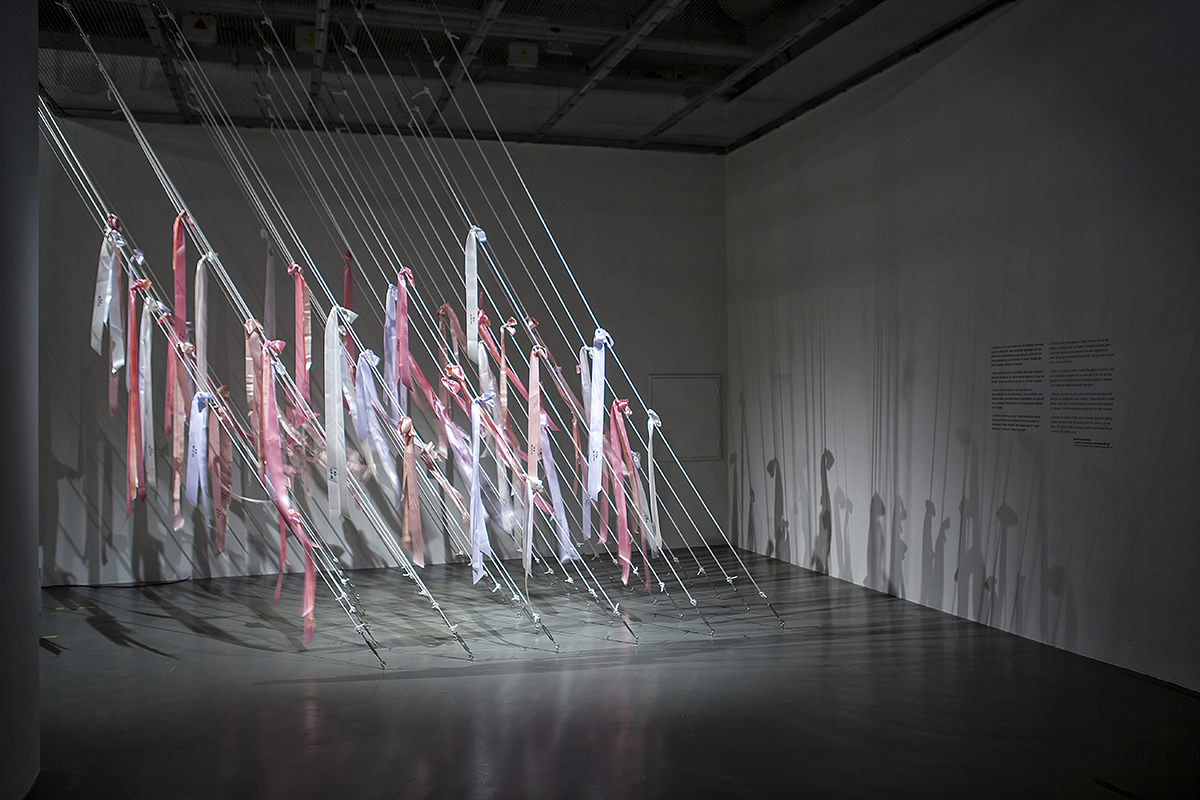- Open Today: 10.00–18.00
- Ticket
- Shop
- Membership
- TR EN

Gülsün Karamustafa, 1946
NEWORIENTATION, 1995
Gülsün Karamustafa graduated from the Bedri Rahmi Eyüboğlu studio at the Istanbul State Academy of Fine Arts in 1969. In her works, Karamustafa takes her own personal history as a starting point and creates a multilayered narrative by combining, in the social historical context, all the external factors that emerge around her and influence her life such as migration, gender, boundaries, and memory. She examines how her personal memory records political, geographical, and sociological developments that are of transformative significance on the macro scale in Turkey, and presents the resulting images to the collective memory of viewers through archival objects. In her works, we often encounter Istanbul, which has always been a very important part of her life.
A site-specific installation for the 4th Istanbul Biennial, “NEWORIENTATION” was exhibited for the first time in a warehouse situated in Tophane, which was used between 1950 and 1990 by merchant vessels for loading and unloading. Karamustafa focuses on women working in the Galata brothel, which dates back to Genoese times, and their encounters with arriving sailors. She decides to shed light on the fates of women who went missing in Istanbul and its environs within the last two years. She fastens sailor’s ropes from the ceiling to the floor by means of large eyebolts and ties colorful ribbons around these ropes. Stamped on the ribbons are the names of the missing women, along with the dates on which they were last seen. Through this work she “summons back” women listed as missing in police records, which only give their names and the dates they were last seen.
Installation
Rope, ribbon
h. 400 cm
Istanbul Museum of Modern Art Collection
Acquired by the Women Artists Fund.
2016 Members of the Women Artists Fund
Mehveş Arıburnu, Işık Keçeci Aşur, Berrak Barut, Banu Çarmıklı, Oya Eczacıbaşı, Hatice Meriçten, Meltem Demirören Oktay, Ebru Özdemir, Nesrin Sarıoğlu, Müge Sevil, Rana Erkan Tabanca, Türkan Özilhan Tacir, Şebnem Kalyoncuoğlu Ünlü